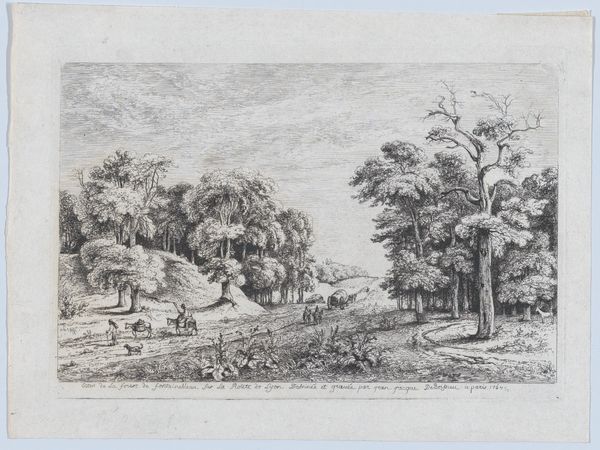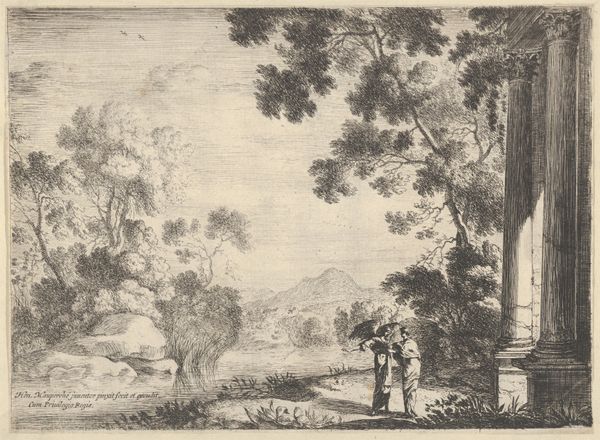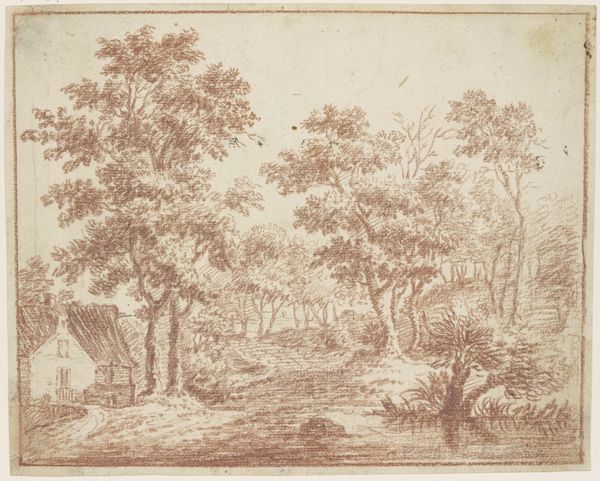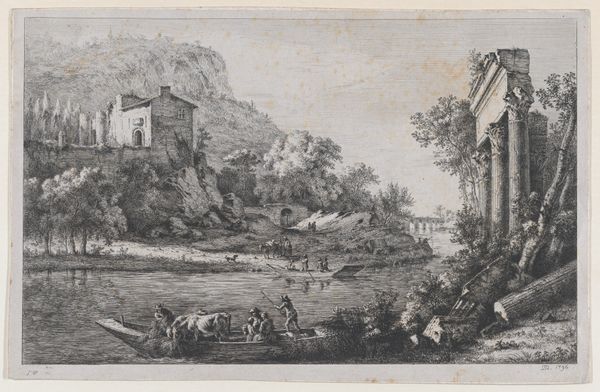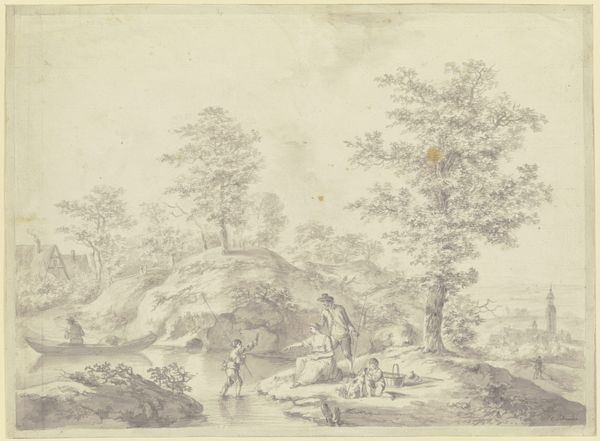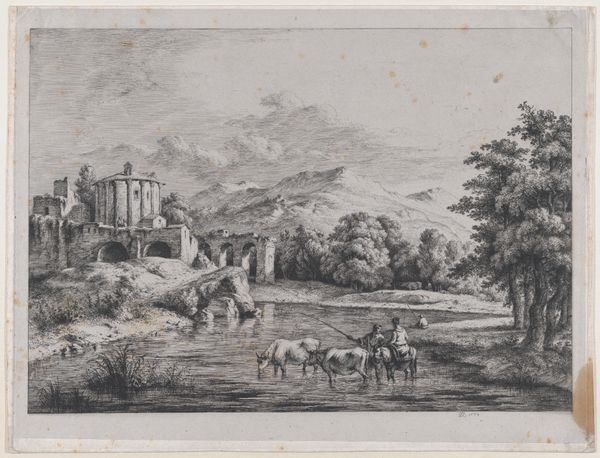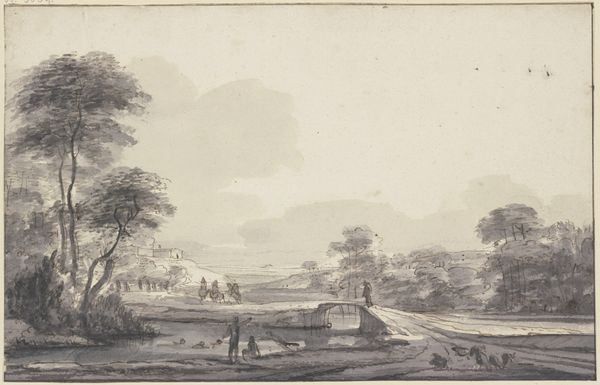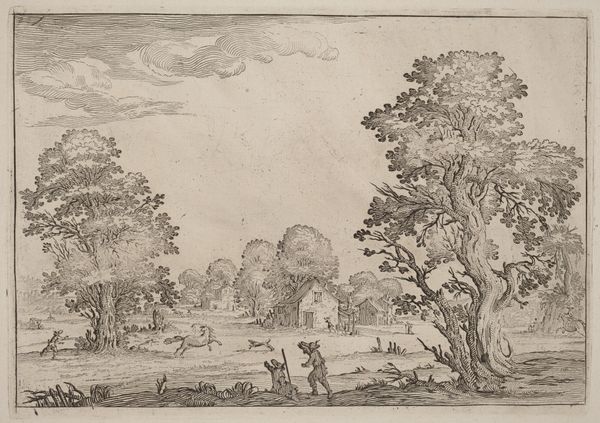
Dimensions: Sheet: 8 5/16 × 12 3/8 in. (21.1 × 31.4 cm)
Copyright: Public Domain
Curator: Jean-Jacques de Boissieu created "Landscape after Fouquières" in 1772. It’s an etching, currently held at the Metropolitan Museum of Art. Editor: It strikes me as idyllic, almost melancholic. The monochrome adds to this subdued, reflective mood. What details stand out for you? Curator: The masterful use of line and tone. Observe how Boissieu captures depth with varying densities of etched lines. Notice the textural contrast, particularly in the leaves of the trees versus the smoothness of the water's surface. It's a study in creating volume and light through purely graphic means. Editor: But that careful rendering obscures some potent class dynamics, doesn't it? The figures are pastoral clichés, yes, but placed firmly *within* a landscape whose ownership they can never truly access. Who owned that land and what impact did that have on the subjects' lived experiences and Boissieu's perspective? Curator: Your point regarding land ownership certainly adds a critical dimension. However, focusing solely on this risks overshadowing the aesthetic achievement—the manipulation of perspective, the atmospheric effects conjured through subtle gradations, and the formal harmony between the foreground and background elements. The Romantic ideal of communion with nature is also quite apparent. Editor: And perhaps the false hope of a meritocracy for land workers in 1700's France? Surely the Romanticism you mention has deep ties to the period’s social upheaval and a yearning for simpler, fairer structures. This etching, as beautiful as it is technically, romanticizes a rural life often steeped in labor exploitation. Its picturesque qualities mask the real conditions of people bound to the land and owners' wills. Curator: An insightful connection. Perhaps both views can coexist: appreciation for the artistic mastery, alongside a critical awareness of the work's historical context and its potential ideological implications. The beauty of this etching shouldn't immunize it from a broader investigation. Editor: Precisely. By appreciating both its visual complexity and its complex social echoes, we enrich our engagement with the piece and encourage an investigation into the broader social framework of 18th-century France.
Comments
No comments
Be the first to comment and join the conversation on the ultimate creative platform.
